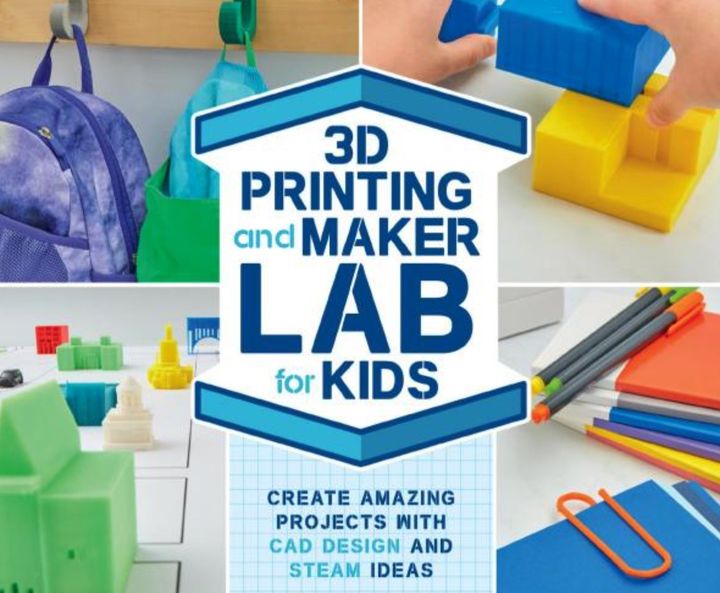
This week’s selection is “3D Printing and Maker Lab for Kids” by Eldrid Sequeira.
Over the past few years the cost of 3D printing has definitely gone down significantly. While only ten years ago you could obtain poorly performing machines at costs of US$2000-3000, that situation has completely changed.
Today you can find reasonably-performing desktop 3D printers at very inexpensive costs. It’s now not uncommon to see machines offering heated print surfaces, automated leveling, filament run-out detection and power-failure protection for only a couple of hundred dollars. Some machines are even being offered at less than US$100, and that trend will no doubt continue.
This drop in pricing means the technology is accessible to far more people and one category of purchase will be parents buying equipment for their children to use.
The thought is likely good: make the machines available to kids who can then learn how to build things. Those skills will certainly be quite important as they get older.
However, there’s a big problem: most parents are wholly incapable of providing content for the children to 3D print. Most people are not 3D designers, and it may not be the best idea to let a child loose in Thingiverse as you have no idea what they will print, whether it is actually 3D printable and how it could help them learn anything useful.
You may end up with a large pile of plastic dragons.
This book could resolve that dilemma by providing a series of real-life projects for children to complete. The book contains 26 different projects, each of which is designed to lead the child through a learning program that involves not only 3D printing, but also design.
Tinkercad and SketchUp are used as design tools, and these are both easy for anyone to learn. I’d prefer Tinkercad over SketchUp for 3D modeling, but learning another tool is always a good thing.
Each chapter provides highly readable material, with plenty of visuals to assist understanding. It’s just the style one would expect to see in material to be read by learners.
Projects include:
- Basic shapes with straight edges
- Basic shapes with curved edges
- Tangram puzzle
- Designing jewelry
- Coat tuck
- Comb
- Paperclip
- Alphabet
- Artificial coral reef
- Whistle
- Phone holder
- 3D puzzles
- Human hand
- Rear car wing
The book also discusses the concept of reverse engineering, which I think would be quite valuable: a child with that capability will be able to replace the broken knob on the dishwasher with 3D printing!
Finally, the book offers the possibility of downloading 3D models from the Internet, and specifically addresses Thingiverse. Once there I am certain children will be able to find other repositories for other material. I like the fact that this is introduced after basic design is taught, as children will surely be more capable.
If you’re a parent considering buying a 3D printer for your children, you might consider buying this book, too.
We’re an Amazon Associate and earn a small fee from qualifying purchases. Help support our 3D print news service by checking out this book!
Via Amazon
